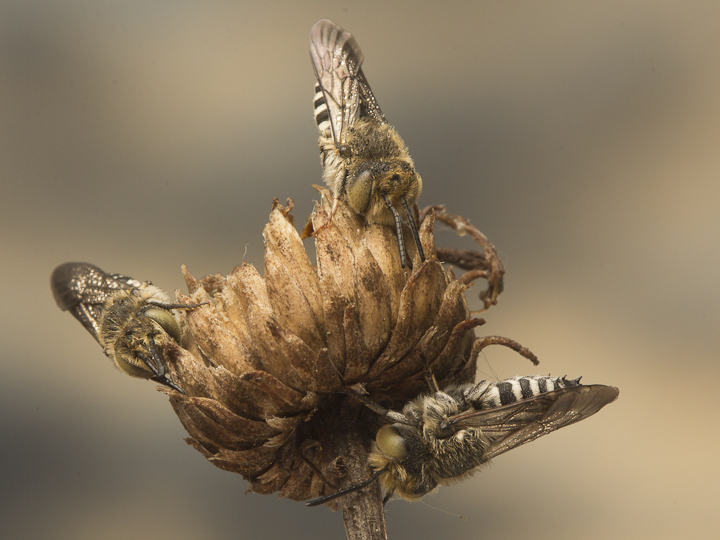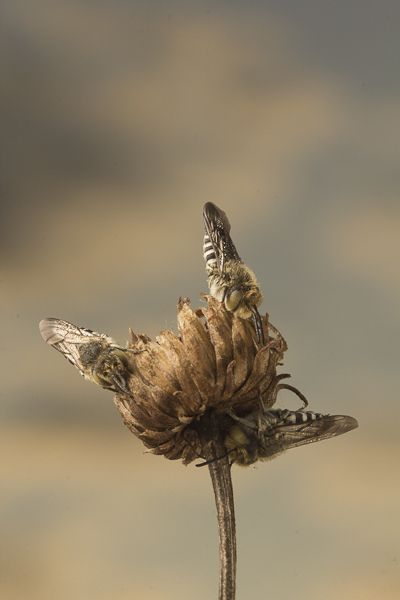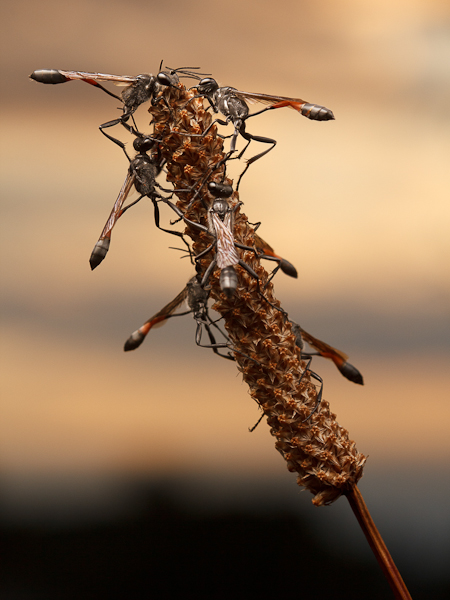Last night, Catherine and I were out again all night, performing what was ultimately a futile spider experiment on Cordova Spit (TIXEN in the SENĆOŦEN language). The one thing that did go right was that the dawn had some decent light, so I set out early to try to get some photos of sleeping hymenopterans.
I did not end up shooting very many, as I found this absolutely lovely cluster of Coelioxys which were just begging to be shot. These parasitic megachilids are wonderful subjects, and seem to sleep in small aggregations, sometimes with Ammophila wasps. Their preferred perches are the dried seedheads of the Puget Sound Gumweed (Grindelia integrifolia), a fragrant seaside plant that is a good place to find halictids in the daytime.
Anyway, here are some of the pictures I took this morning!

Shot with the 100 mm macro, this shot shows the mixed cloud of dawn, and the dew collected on the bees

The same bees shot with the A720IS, in the wideangle macro style. This gives the bees more of a bugeyed look!

A similar view of the Ammophila with the A720IS. With this wide a shot you can really see the extent of the sky

As usual, when I find a great subject, I try to frame some up in portrait orientation, just in case I get the call for a National Geographic cover!
















































